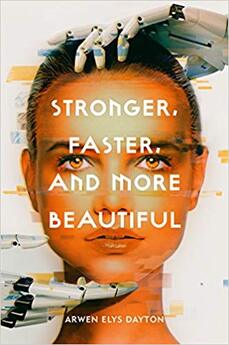Many of us who have taught or who teach in ELA classrooms realize how often the short story is used. Classrooms are few of anthologies that are full of great story stories from "The Scarlet Ibis," "The Most Dangerous Game," or "The Gift of the Magi." Teaching stories like these and other can go a long way to teaching or refreshing student understanding of basic literary components--setting, plot, character, symbols, and other components of literature. They are often taught independently or grouped together by theme.
From time to time some of the short stories included as "stand-alone" are in reality often part of connected collection or a short story cycle. For example, think about how often Joyce's "Clay," Steinbeck's "Flight," Hemingway's "Soldier's Home." and even more recently O'Brien's "The Things They Carried." How much richer would the reading experience be if student read the short story in its full context? Would student benefit from a bigger introduction to the context of Joyce's Dubliners or of the Salinas valley as depicted in Steinbeck's The Long Valley.
Chief among these collections of short story cycles, and perhaps, the inspiration for many of these is Sherwood Anderson's Winesburg Ohio. There are many things to consider when teaching the short story. What is our instructional goal? What these short stories? Are we using them to introduce students to a specific author? If the latter is the case, should we be considering the short stories of many of today's YA authors--those that stand-alone as independent shorts and those are a deliberate part of short story cycle.
Below, Melanie and Sarah introduce us to a collection of short stories that focus on technology. Take it away.
Stronger, Faster, and More Beautiful: Technology and YA
In the final story, “Curiosities,” Luck and Starlock are “Protos,” or unmodified people who are told they are a separate species from the highly modified humans who keep them on a reservation. When a catastrophic disease kills their human contacts, Luck and Starlock venture off the reservation to see how they might help. Luck and Starlock have grown up believing that they are not human, that humans are a species apart and evolutionarily beyond Protos. However, what seemed like truth turns out to be a form of human oppression as it becomes apparent that one group has been using physical differences as a way to keep themselves separate from another group.
As readers, we see connections to familiar and frequently discussed tropes about human morality: pride and/or vanity will come before a fall (e.g., an apocalyptic plague); those who meddle with their bodies will be punished; those who oppress others will ultimately suffer; youth and innocence, hope and love will save humanity. Dayton offers the reader a complicated and nuanced way to think about technology—not as the savior or the cause of suffering but rather a tool to be used by humanity. This shifts the focus to how technology changes how we think about the technology itself. The moral question developed across these stories is not whether or not technology is right or wrong; it is, rather, the question of who makes the decisions about technology and how that technology gets used. Technology has been used to free and enslave and to kill and to cure; this young adult novel highlights those uses but also raises questions that challenge reader perceptions of technology and the ethical use of it in a society. Perhaps it is our human attitudes and human choices in how we apply both morality and technology that cause the harm attributed to technological development.
Dayton, A. E. (2018). Stronger, Faster, and More Beautiful. Delacorte Press, an imprint of Random House Children’s Books: New York, New York.
Dr. Melanie Hundley is an Associate Professor in the Practice of Language and Literacy Education at Vanderbilt University’s Peabody College; her research examines how digital and multimodal composition informs the development of pre-service teachers’ writing pedagogy. Additionally, she explores the use of digital and social media in young adult literature. She teaches writing methods courses that focus on digital and multimodal composition and young adult literature courses that explore race, class, gender, and sexual identity in young adult texts. She has taught both middle and high school English Language Arts and currently co-directs Patterson RAPS, a reading program for middle school students.












 RSS Feed
RSS Feed